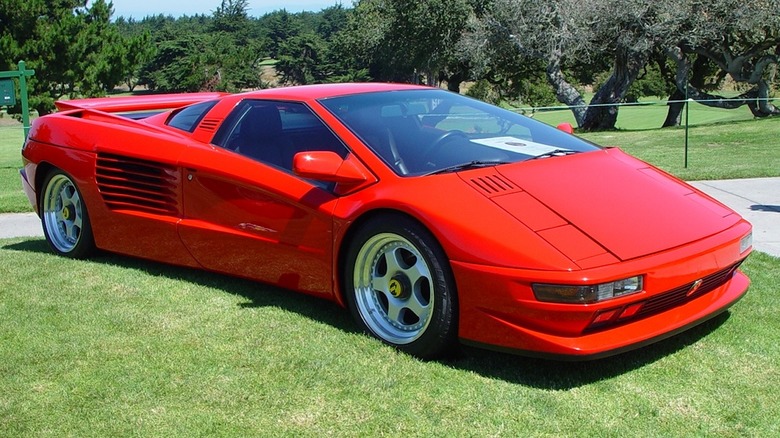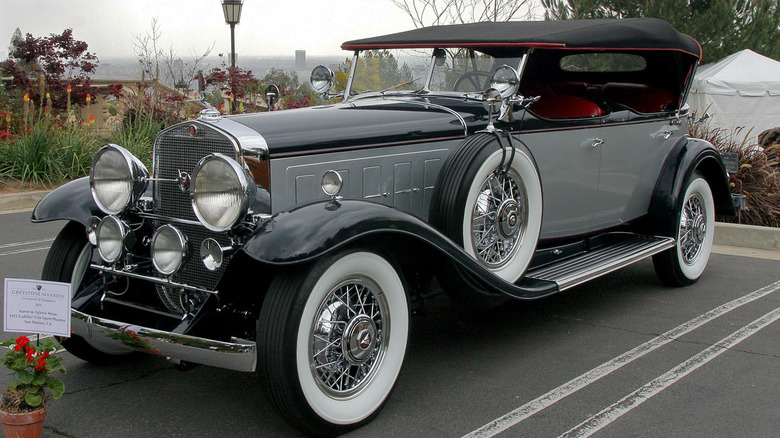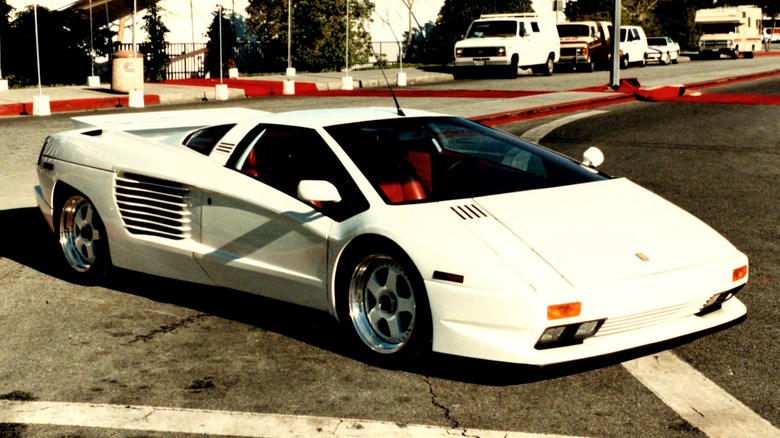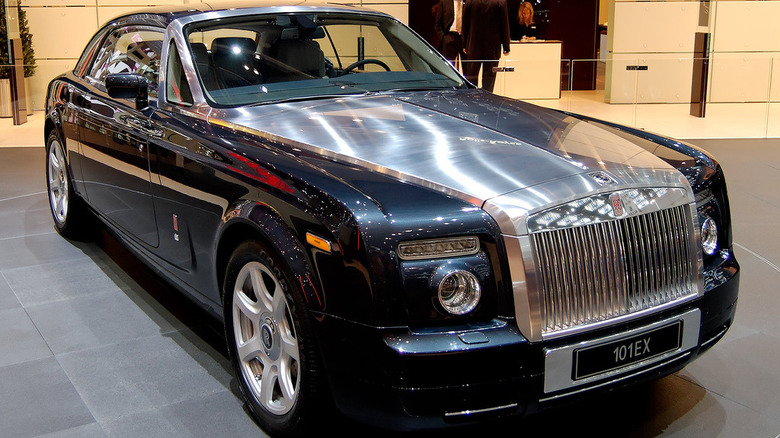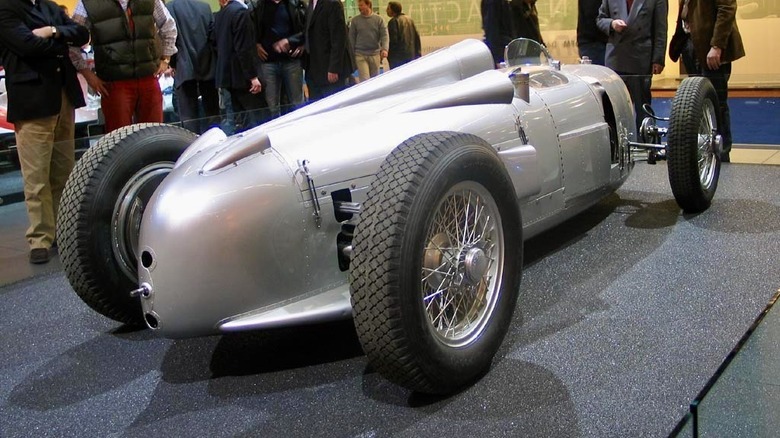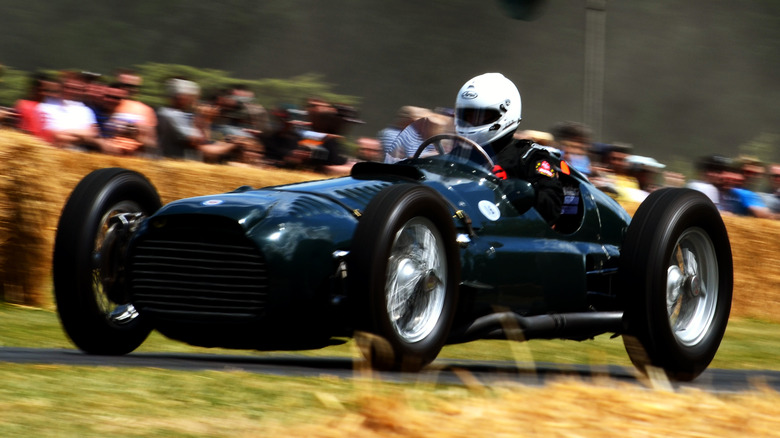5 Iconic Cars Powered By 16-Cylinder Engines
Americans often hold up the iconic V8 engines of the past as the high watermark for vehicular excellence. From large pickup trucks to the heyday of the muscle car, these eight-cylinder powerhouses have come to define what many people think about when they picture a powerful engine. However, that's a pretty limiting idea of what a car's engine can be. In the grand scheme of things, V8s can even look small compared to other mechanical beasts, especially when put against something like a V16 engine.
Cars with V12 engines are already rare, and seeing a V16 in the wild is even less common. These massive 16-cylinder engines have powered trains and airplanes, so seeing one under the hood of a car is always noteworthy. They're hardly new tech, though, as V16 engines have existed for over 100 years. To give a proper spotlight to the hulking engine, let's look at five different cars that have utilized the V16 over the years.
[Featured image by Craig Howell via Wikimedia Commons | Cropped and scaled | CC BY 2.0]
The Cadillac Series 452 broke ground for V16 engines
The V16 engine goes all the way back to airplane production in the early 1900s, but it didn't make its way into a production car until Cadillac put a 7.4L V16 engine in the 1930 Cadillac Series 452, referencing the 452 cubic-inches of displacement. To deal with its size, the four-door automobile needed to be massive in length, giving it quite an imposing silhouette.
Rather than design the V16 to mimic the V8 with 90-degree valves, the Cadillac V16 had them at 45-degree angles. That design element has remained for the majority of V16 engines. However, this relic did share something with Cadillac's V8 engines, as the design was essentially just two V8 blocks bolted together.
The Cadillac 452 was able to get 165 hp. That may not seem like a lot today, but when you compare it with the contemporaneous Cadillac Series 355, which featured a 5.8L V8 engine that could generate 115 hp, you can understand what a powerhouse it was for the time. Cadillac evolved the Series 452 cars into the Series 90 models for 1938, which retained an altered V16 engine until production ceased in 1940.
[Featured image by Rex Gray via Wikimedia Commons | Cropped and scaled | CC BY 2.0]
The Cizeta-Moroder V16T was a rare super car
The next car on our list is a rare and intriguing Lamborghini look-alike. The Cizeta-Moroder V16T, which only had about a dozen units produced, was the brainchild of Claudio Zampolli, who worked as an engineer for Lamborghini before breaking out on his own. In a unique partnership with legendary music producer Giorgio Moroder, with whom he was good friends, Zampolli enlisted Lamborghini designer Marcello Gandini to collaborate on creating a new design.
What resulted was the Cizeta-Moroder V16T, a rear mid-engine super car with a 6.0L 16-cylinder engine at its core. Despite the T in its name, there's no turbocharger to be found here. That's fine, though, as it was still able to provide a whopping 540 hp and 400 lb.-ft. of torque. The prototype for the vehicle was made in 1989 before it went into official production in 1991. From there, it became a made-to-order vehicle, and it took an incredibly long time to produce, to the point that Moroder eventually stepped away from the project. Regardless, the Cizeta-Moroder V16T is a now super car rarity.
[Featured image by Alden Jewell via Wikimedia Commons | Cropped and scaled | CC BY 2.0]
The Rolls-Royce 100EX and 101EX were V16 concepts
The Rolls-Royce 100EX and 101EX are quite an interesting pair in the history of the British luxury automaker. That EX designation indicates that they are, indeed, experiments; essentially concept cars. The 100EX was specifically produced in 2004 to celebrate a hundred years of the Rolls-Royce company — or at least, a hundred years since the initial meeting between Charles Rolls and Henry Royce. It was given a truly massive 9.0L V16 engine to help make it a truly special product.
A couple years later, Rolls-Royce also created the 101EX — as convertible instead of the 100EX's hardtop model. Neither of the vehicles became production cars. Instead, the company used them as the jumping-off point for what became a new revival of the Rolls-Royce Phantom.
While the Phantom used a V12 engine instead of the V16 of its predecessors, one model did carry the massive engine of the EX series. The V16 Phantom was specifically made for the film "Johnny English Reborn" at the behest of star Rowan Atkinson, an avid gear head who owned a Phantom himself.
[Featured image by Max Schmitt via Wikimedia Commons | Cropped and scaled | CC BY-SA 2.5]
The Auto Union Type A put a V16 on the racetrack
The final two cars on this list take us over to the racetrack, and this first one has something of a dark past, as it's a direct result of Adolf Hitler's rise to power in Germany in the early 1930s. The Nazis wanted German supremacy in every facet of life you could think of, and that included the racing industry. This led to the state-sponsored development of racecars. What was created was the Auto Union Type A, powered by a supercharged 4.4L V16 engine, which hit the racetrack in 1934.
The Type A had an output of 295 hp and 391 lb.-ft. of torque, and it was quite a force on the track, though Mercedes-Benz was able to keep pace. The following year, Auto Union unveiled the upgraded Type B model, which increased the bore and compression ratio and increased the output to 375 hp and 478 lb.-ft. of torque. Mercedes could still frequently beat the Type B, so the Type C hit the track one year later.
With further increases to the bore and compression, this new car could generate a whopping 520 hp and 630 lb.-ft. of torque. The ensuing races were dangerous, though, even proving fatal for some drivers. Rule changes required all companies to dramatically reduce their vehicles' outputs, and Auto Union moved to a V12 for the next iteration.
[Featured image by FaceMePLS via Wikimedia Commons | Cropped and scaled | CC BY 2.0]
The BRM Type 15 was a symbol of British resilience
For this last car, we go from the awful beginning of World War II to the post-war period in Great Britain. After an era of desolation for the British, it was time for the country to get on the rebound, and part of that plan was to insert itself into the global racing scene. With Germany out of commission after the war, a spot had opened up to truly compete. British Racing Motors, or BRM, was formed in 1945 with the goal of creating a Grand Prix winning vehicle to represent the country, and after years of development, the BRM Type 15 was unveiled at the beginning of the 1950s.
The Type 15 name was in reference to the vehicle's 1.5L V16 engine. That may seem small, but this supercharged engine was able to exceed 500 hp. However, its arrival on the race track in 1950 was something of a disaster, as a driveshaft failure at the very start of the race took it out of contention. It was a rough start, but success followed. Unfortunately, 1952 saw the World Championship change its rules to Formula 2 rather than Formula 1, which disallowed the Type 15 V16 from being able to compete. Though it won races, it never managed to compete for a championship again.
[Featured image by Nic Redhead via Wikimedia Commons | Cropped and scaled | CC BY-SA 2.0]
